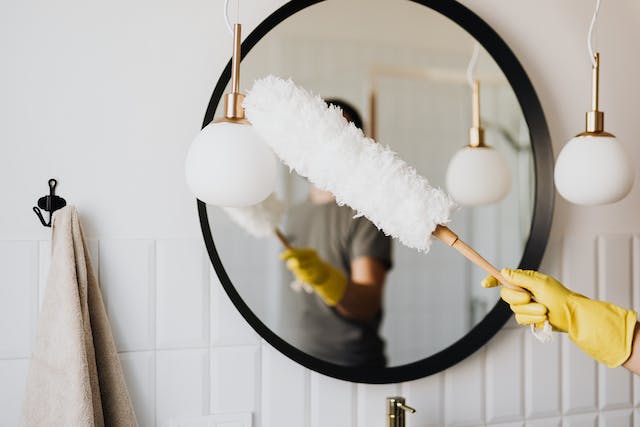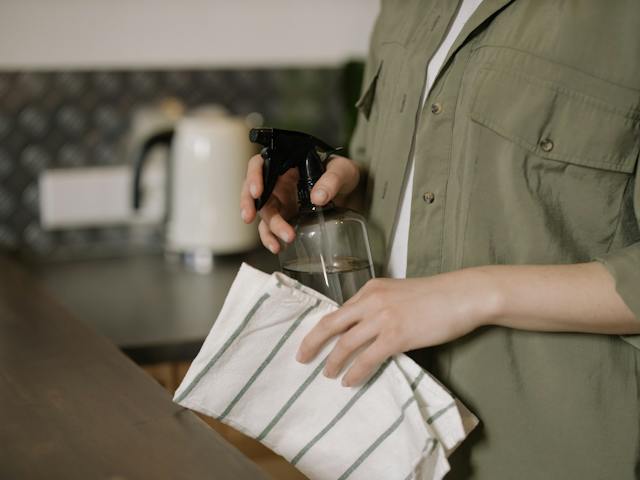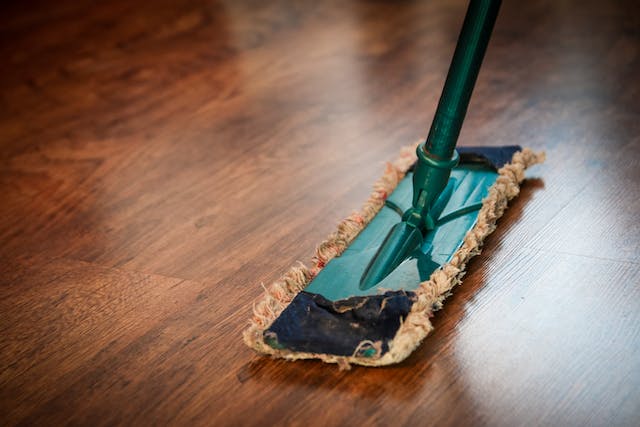Once a tenant vacates the property, the landlord is left with obligations. Landlords are required to return the security deposit and confirm that the renter cleaned the property before departing if there is no damage to the property beyond typical wear and tear.
Tenants and landlords may have different standards of cleanliness, so it's important to have a maintenance and repair clause in the rental agreement as well as an end-of-tenancy checklist. This could help prevent conflict and provide tenants with direction on what areas to focus on.
What Does 'End of Tenancy Cleaning' Mean?
End of tenancy cleaning means giving your rental a thorough clean before handing the keys back. This process means cleaning every part of the property—from the floors and walls to carpets, furniture, and appliances—to make sure everything is back to how it was when you first moved in.
Think of it as leaving a good last impression, or better yet, like returning a borrowed car with a full tank and a fresh wash.
Why Is It Necessary to Do an End of Tenancy Clean?
Tenants should return the property to the same condition as when they first moved in. This means fixing any changes to the property's look, like unauthorized painting or damage to the furniture provided, and it also includes keeping it as clean as it was.

If the property isn't given back in its original state, tenants might lose part of their security deposit. Landlords have the right to deduct from the deposit if they're not satisfied with the property's condition when you leave.
How Thorough Should the End of Tenancy Cleaning Be?
What one person thinks is 'clean' might be different for someone else, which is why cleaning at the end of a tenancy often leads to disagreements or filing legal disputes.
A landlord can only ask a tenant to clean the property to the same level it was at the start of their stay. Any record or inspection done before moving in should be the benchmark for the cleaning when moving out.
The landlord is also expected to have given a written list of all items provided to the tenant, detailing the state of each one. This record usually includes a detailed description and possibly photos of what each part of the property looked like initially. This can be used as a guide to know which aspects of the rental property should be cleaned.
What is Normal Wear and Tear?
"Normal wear and tear" describes the usual deterioration that happens from everyday living and natural elements like sun and rain.

Things like carpet wear, marks on wooden floors, or paint fading are just part of renting a property. Landlords shouldn't charge tenants for these normal changes.
End of Tenancy Cleaning Checklist
Fixtures, Fittings, and Furnishings
- Dust and clean wardrobes, shelves, and cupboards.
- Clean the tops of mirrors, picture frames, and curtain rails.
- Dust light fixtures, lampshades, and bulbs.
- Polish surfaces of tables, desks, and sideboards.
- Shake out sofa cushions outside and vacuum the sofa without cushions.
- Clear and clean the insides of drawers and cupboards.
Bathroom
- Clean and shine basins, taps, and fittings using natural cleaners like vinegar or lemon juice.
- Clean bathtubs, addressing limescale and water stains.
- Scrub the toilet with a brush, disinfectant, and gloves to maintain hygiene.
- Clean all tiles and remove mold from grout.
- Polish shower trays, doors, and shower heads.
- Wipe down radiators or shower rails to eliminate dust and buildup.
- Unblock any slow-draining sinks to keep drainage efficient.
Cleaning Walls, Doors, Floors and Ceilings
- Check walls for scuffs and address them through repainting or cleaning as necessary.
- Thoroughly clean and polish light switches and sockets.
- Clearing ceilings of cobwebs, particularly in corners.
- Mop all hardwood floors

- Wipe down doors, handles, tops, and frames to remove accumulated dirt.
- Clean baseboards and ensure streak-free windows and mirrors.
- Dust off window sills and frames.
Kitchen
- Degrease and clean the oven.
- Wipe down worktops, paying meticulous attention to stainless steel surfaces.
- Empty and clean the fridge/freezer, ensuring thorough cleaning of the seal for hygiene.
- Disinfect trash bins and surrounding areas.
- Clean the extractor fan and filter.
- Empty and clean all cupboards and drawers, using an old toothbrush for dirty grout on wall tiles.
- Refresh the floor and wipe down smaller appliances.
- Ensure cutlery and dishes are clean and stored appropriately.
- Clean larger appliances like dishwashers and washing machines.
Carpets
- Vacuum the carpet thoroughly to remove loose dirt and debris.
- Clean the entire carpet, ensuring to move furniture as needed.
- Steam cleaning is particularly efficient in removing most stains but requires adequate drying time.
- Save steam cleaning for the last step, working your way towards the exit for a systematic approach.
Exterior
- Mow the lawns.
- Keep flower beds and bushes tidy.
- Sweep patios and decks and use a power washer for tough dirt or mold.
Conclusion
Ensure a smooth transition after a tenant vacates by understanding post-tenancy responsibilities. Landlords must return the security deposit and confirm cleanliness. The concept of 'End of Tenancy Cleaning' involves a thorough cleaning akin to leaving a borrowed item in pristine condition.
This practice is necessary for tenants to receive their full security deposit . However, cleaning standards may vary, leading to disputes. To mitigate conflicts, a landlord should provide a detailed list of the property's initial condition.
For comprehensive end-of-tenancy cleaning guidance, contact Legacy Realty and Management , ensuring a seamless process and tenant-landlord satisfaction.
